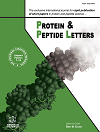
Full text loading...
Proteins and peptides play a crucial role in biological functions and contemporary therapeutic approaches; however, their clinical effectiveness is frequently hindered by swift renal clearance and enzymatic degradation. Peptides possess structured amino acid sequences that facilitate targeted drug delivery and enhance patient adherence. In contrast, proteins demonstrate intricate stability behaviors affected by pH and environmental conditions, requiring careful formulation strategies. Addressing these challenges necessitates a comprehensive understanding of stability and regulatory requirements. Regulatory agencies, including the FDA, EMA, and PMDA, require comprehensive stability testing per guidelines such as ICH Q5C and ICH Q1A(R2). This ensures meticulous management of factors such as temperature control, formulation optimization, and aggregation mitigation. Stability enhancement requires the application of innovative techniques, including protein engineering, lyoprotection, and nanoparticle encapsulation, in conjunction with ongoing quality monitoring. Integrating scientific expertise with regulatory standards enables researchers and pharmaceutical manufacturers to develop safe, effective, and compliant protein and peptide therapeutics for various patient populations.

Article metrics loading...

Full text loading...
References


Data & Media loading...

